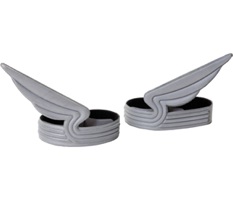Inbetween places
I spent all day Saturday at a discussion / conference event hosted at Royal Roads University. To get there, I drove. I could have bicycled if I’d gotten up early enough and if my bike were in good working order (it isn’t). I could even have taken the bus – except that instead of driving for 20 minutes, I probably would have been on the bus for over an hour.
And so I drove, which is kind of ironic in light of my earlier blog post about how cars kill cities.
At the conference / extended conversation, we talked a lot about alternative strategies for building community (and communities) and about problems with the old models (obviously also including the car-centric model).
But here’s what really struck me (again) as I drove home along the (Old) Island Highway: the worst parts of car-centric (mis-)planning are the inbetween places, in particular strip-mall-lined roads.
Royal Roads is on an idyllic campus. Parts of the surrounding municipality are densifying and trying to create “village” centers. Some of the municipalities you drive through on your way back to downtown are beautiful, or quirky, or interesting: Admirals Road Bridge (anglers lined it both this morning and this afternoon); the Gorge Waterway; Esquimalt, Vic West, and so on.
But the inbetween places, which are neither suburb nor “village” nor rural, and instead are really the pure product of automobiles – those places are going to be big losers in any kind of new urbanism shift.
Right now, you either can’t reach them without a car, and if you were intrepid enough to bike to them, you wouldn’t want to. This makes them uni-functional (is that a word?), and hard to fashion to adaptive re-use. Cars and strip malls are in a deadly embrace, not a thing of beauty to behold.
The screenshot, below, of the Island Highway as you drive back toward either View Royal or the Trans Canada Highway, doesn’t convey the true “stripping” of the place (see Gordon Price, Strip Search, for more on the topic). In British Columbia, lush vegetation and trees tend to soften some of the ugliness, but believe me: aside from the nice trees, this strip is ugly… And admittedly, this particular section also shows a sidewalk, but merely sticking a sidewalk alongside a road does not a good pedestrian experience make. This is a car strip all the way. It’s quite clear that anyone on foot is disadvantaged, and that those who drive are not.

Island Highway, trees decorating the strip
.
I don’t think we could tolerate strip malls if we didn’t rely on speed to “save” us from them. How so? Well, you take them in with peripheral vision and at speed (car speed), because of course you’re driving – no one in their right mind walks along these roads. Basically, if you were to look at them full on, slowly (say, while walking or biking), you’d be astonished (turned to stone), just as the gorgons turned to stone those who looked on them. Strip malls are ugly – the only way they survive is by being ignored, by not being seen. (And yes, I’ve read my Learning from Las Vegas, but reserve the right to say “Death to Strip Malls” anyway.)
Drive by quickly, don’t look. If and when you do leave the road to enter one of them, leave the safety of your vehicle only to hasten into the store at which you aimed your car. When you leave, carry not a trace of place-memory with you. As in dealing with gorgons, strip malls can only be managed by being blind to them.
But fanciful references to gorgons (and Perseus on a bicycle?) aside, my main worry really is about adaptive re-use.
.
As I drove home, I thought of all the great things I heard at the conference – about eco-living and alternative strategies and connections and… And then, risking accidents, I took my eyes off the road and really looked at the strip malls.
Where to start with re-making them?

The worst part about that strip of Colwood is the near impossibility of conveniently crossing the highway. At least Langford has something of a grid structure.
Sadly, this form of development is not limited to the Western Communities. If you travel up Island it seems to be one strip mall after the other without interruption (or sidewalks) from the Malahat way up past Comox.
Comment by robert randall — March 8, 2010 #
Hm, interesting observation about the (missing) grid structure. I could add “d’oh” (slapping my own forehead) – somehow, the grid is an obvious marker in an urban context, but I hadn’t thought about how its absence makes the suburban and/or strip mall purgatory even less rational.
.
And yes, I hear you with regard to strip malls up island. I haven’t been up to Nanaimo in decades, but I was in Duncan just a few years ago. Not a pretty picture.
Comment by Yule — March 8, 2010 #